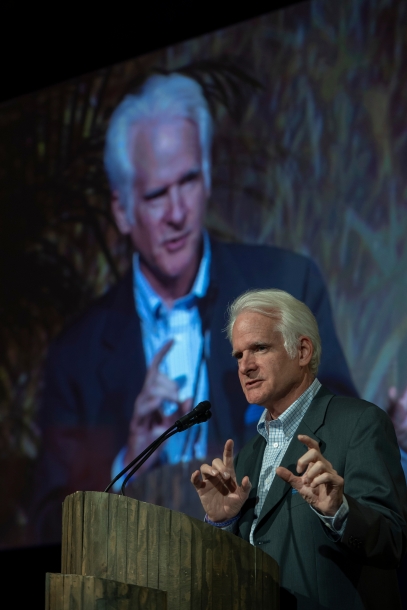You are here
Tilting at Windmills?
As part of the global marketing of Hope in a Changing Climate, the award-winning film Halperin executive produced with a team from the Environmental Education Media Project, Halperin authored a series of blog posts from December 2009 to June 2010. The following dispatch is part of this series.
To learn more about the film and ecosystem restoration, see the Hope in a Changing Climate project.
Sandwiched between front-page headlines today in the New York Times--one on the approval of wind farms off the Massachusetts coast and the other on progress of the financial reform bill to reign in Wall Street excesses—was the story of the Gulf Coast oil slick. As a thematic collage of our moment, it was arresting in its depiction not only of the renewable energy economy emerging from the goo of the fossil fuel era, but also in the juxtaposition of old money and new.
A generation ago, who would have imagined harvesting the wind? A quixotic endeavour, to be sure. Will people a generation hence consider wind speeds in property purchasing decisions the way we today consider the view?
Who twenty years ago would have envisioned that we would today need to fix a price for carbon based not on its inherent value but rather on the earth’s limited ability to absorb it? Although we talk about the carbon market, it is really an un-carbon market that is emerging. If it takes some mental agility to understand Wall Street’s affinity for securitized subprime derivatives, then it is world class mental gymnastics to make sense that we are now buying and trading an invisible gas that no one really wants, and of which we have vastly too much for the health of our species.
If there is value in capturing carbon, if emitters of carbon are effectively going to have to pay rent in order to use some of the earth’s capacity to absorb carbon, then it seems quite likely that wealth is going to be redistributed on scale that we have perhaps never before experienced. We can see the turbine blades spin as we harvest wind. It won’t be long before someone devises a way to meter the photosynthetic process that draws carbon out of the atmosphere. Granted, a bit more complex than capturing sap dripping out of a maple tree.
But impossible? A dream? An impossible dream?
I think not.
-- Jonathan J. Halperin

